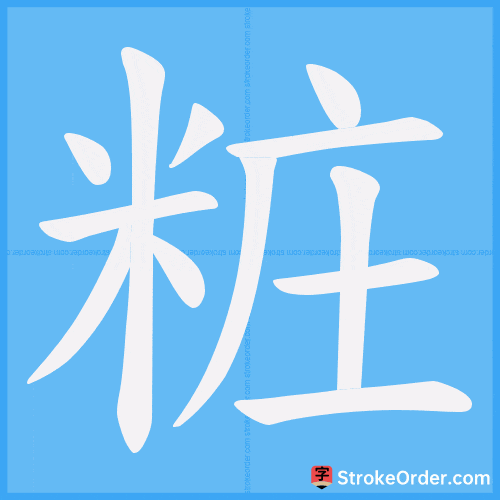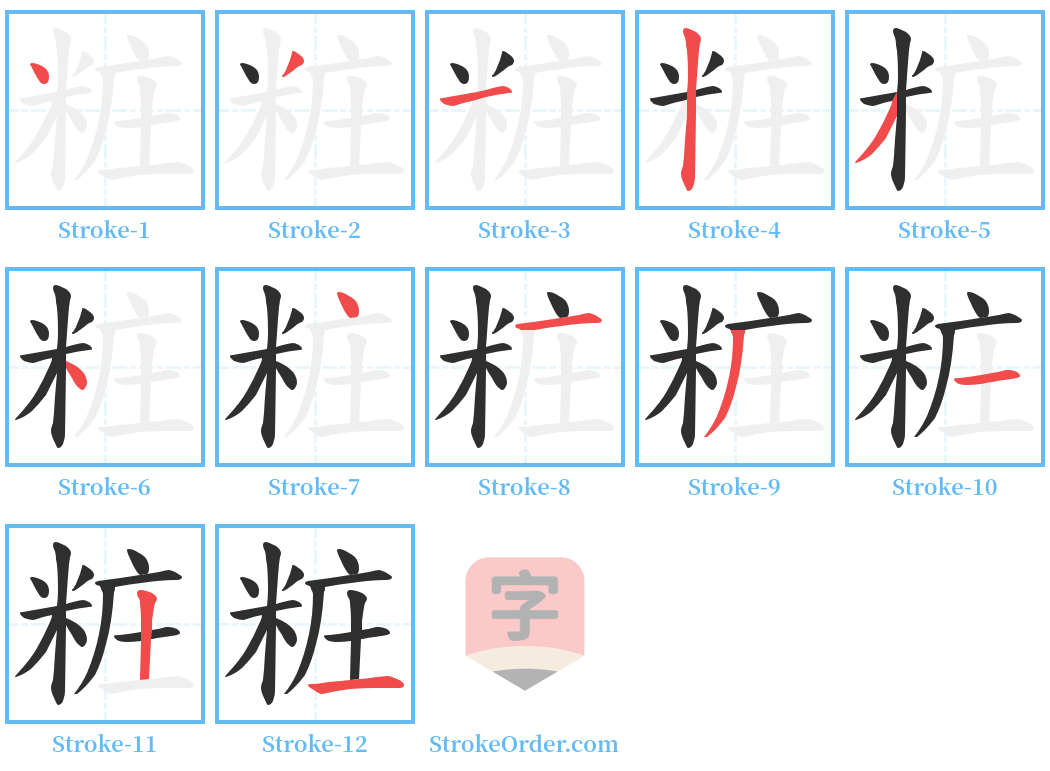粧 Stroke Order
Animated Stroke Order of 粧

Stroke Order Diagrams for 粧

Information of 粧
Pinyin
zhuāng
Radical
米
Strokes
12 strokes
Usage
★★
Definition
粧 (zhuāng)
1. Same as "妝" (makeup, adornment).
- "妝," according to "Shuowen Jiezi": "to adorn." Xu notes: "Now commonly written as 粧."
2. Used the same way as "裝" (to load, to adorn).
① To dress up; to pretend. Example from Yuan drama by Ma Zhiyuan: "Recognizing from the beginning, it is all accurate. How can one feign deafness with silence?"
② To load. Example from "Jing Shi Tong Yan": "The elder carried his own shrine, adorned it for Kechang, and lifted it from the mountain top."
动 (verb): (phono-semantic compound. The left component is 女 (woman), the right component is 爿 (pán); denotes the action of dressing and adorning).
- Same as the primary meaning of 妝, which is also to adorn. -- "Shuowen Jiezi."
- The character can also be written as 娤. Additional examples include:
- 妆束 (the style of dressing up);
- 妆台 (the mirror table used by women for makeup, also refers to a boudoir);
- 妆严 (the style of dressing up).
动 (verb): (phono-semantic compound. The left component is 女 (woman), the right component is 爿 (pán); denotes the action of dressing and adorning).
- Same as the primary meaning of 妝, which is also to adorn. -- "Shuowen Jiezi."
- The character can also be written as 娤. Additional examples include:
- 妆束 (the style of dressing up);
- 妆台 (the mirror table used by women for makeup, also refers to a boudoir);
- 妆严 (the style of dressing up).